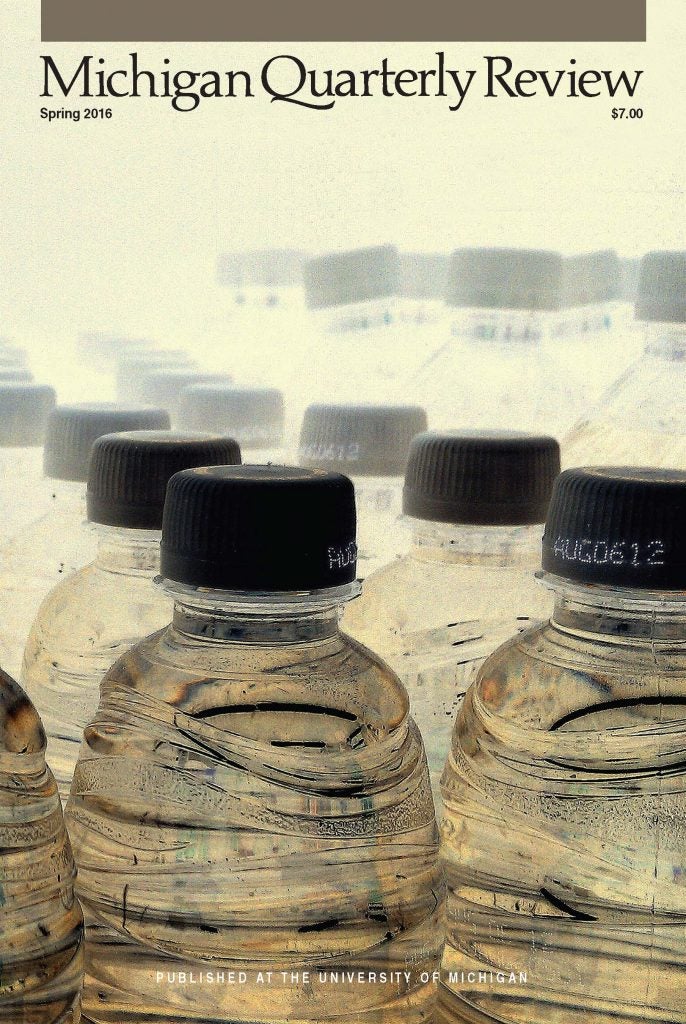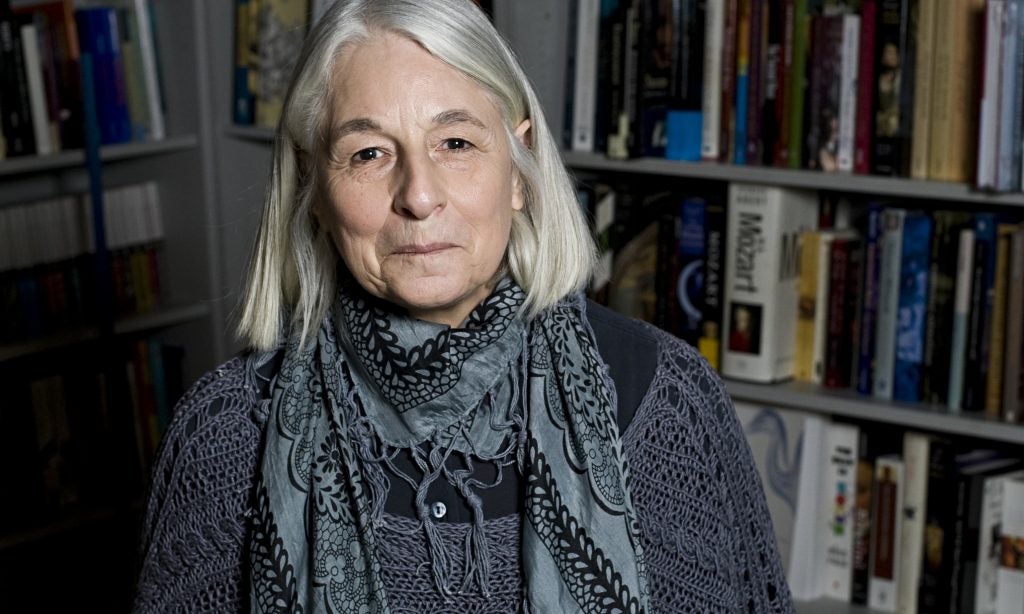MQR 55:2 | Spring 2016
Our Spring 2016 issue features a special section on the Flint water crisis. Flint native Kelsey Ronan explores the effect of the crisis on her family, and Tarfia Faizullah dedicates her poem “I Told the Water” to Flint; Matthew Baker and Jack Driscoll use fiction to look at life in Michigan today.
Also in this issue: Zhanna Slor remembers her family’s last years in the USSR and Kathy Leonard Czepiel remembers Columbine—again and again.
Fiction from Matthew Baker, Chelsie Bryant, Jack Driscoll, Daniel Herwitz, Janis Hubschman, and Laura Maylene Walter.
Poetry from Anna Lena Phillips Bell, Patricia Clark, Tarfia Faizullah, Jennifer Givhan, Alison Powell, and Alison Stone.
MQR 55:2 | Spring 2016 Read More »
Our Spring 2016 issue features a special section on the Flint water crisis. Flint native Kelsey Ronan explores the effect of the crisis on her family, and Tarfia Faizullah dedicates her poem “I Told the Water” to Flint; Matthew Baker and Jack Driscoll use fiction to look at life in Michigan today.
Also in this issue: Zhanna Slor remembers her family’s last years in the USSR and Kathy Leonard Czepiel remembers Columbine—again and again.
Fiction from Matthew Baker, Chelsie Bryant, Jack Driscoll, Daniel Herwitz, Janis Hubschman, and Laura Maylene Walter.
Poetry from Anna Lena Phillips Bell, Patricia Clark, Tarfia Faizullah, Jennifer Givhan, Alison Powell, and Alison Stone.








